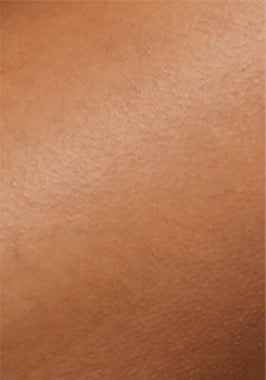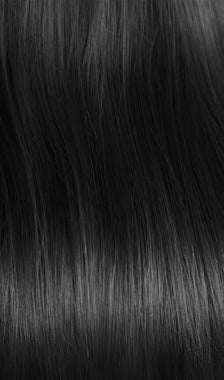Facial hair makes the skin appear darker by covering the natural tone and texture of the skin. It also weakens women's self-confidence as it changes the social norm of “ perfectly groomed woman ” .
While hair removal is a common method of dealing with unwanted facial hair, bleaching can lighten hair and brighten skin without much effort. However, it is not a safe method of dealing with facial hair.
So in this article, let us talk about the uses, benefits, side effects and applications of facial hair bleaching.
Table of contents:- Part 1: What is facial hair bleaching?
- Part 2: Side effects of bleaching facial hair
- Part 3: Bleaching facial hair - before and after
- Part 4: Step-by-step guide to bleaching facial hair
- Part 5: Home remedies for bleaching facial hair
- Part 6: The best facial hair bleaching creams and facial hair bleaching kits
- Part 7: FAQs
- Part 8: Conclusion
What is facial hair bleaching?
The bleaching agent is a mixture of a cream and a powder substance. The cream forms the basis of the product and the powder is an accelerating substance that enhances the effect of the bleaching. The activator substance is actually a chemical that breaks down the melanin pigment in the hair and removes the color. This makes the color of the hair match the skin and makes it less noticeable.

The chemicals used in the bleaching powder include hydrogen peroxide, sodium hypochlorite, ammonia and mercury. These chemicals lighten the hair shaft by reducing the amount of melanin in the hair. The bleaching agent not only lightens facial hair but also provides an even and radiant skin tone.
Also, the bleaching agent works best on fine and unprocessed hair like peach fuzz on the face. Therefore, it is often used on the upper lip, sideburns, cheeks, forehead and eyebrows. However, it may be ineffective on thick chin hair or you may need to use a larger amount of activator on the chin area.
Side effects of bleaching facial hair
Although bleaching is a painless and effortless way to get rid of unwanted peach fuzz on your face at once, it comes with some side effects which are listed below.
- Dry and irritated skin: Since bleaching contains chemicals and no moisturizing ingredients, your skin may feel dry immediately after the treatment. It can also cause redness and itching as the skin becomes irritated.
- Sun damage: The melanin in skin and hair provides some protection from the sun. Bleaching reduces the amount of protective melanin and makes the skin vulnerable to sun damage.
- Skin burns: Excessive use of bleach or adding too much activator can attack the top layer of skin and cause peeling and burns.
- Dermatitis: The chemicals contained in bleaching can cause skin inflammation and lead to contact dermatitis, which manifests itself in the form of redness, hives, swelling and blisters.
- Acne: Some whitening creams contain steroids. These steroids can lead to steroid-stimulated acne in the form of blackheads, pimples, red bumps and pustules.
- Skin discoloration: Excessive use of bleaching creams containing hydroquinone can cause black-blue discoloration of the skin, which is called exogenous ochronosis.
- Mercury poisoning: Not all, but some bleaching creams contain a high percentage of mercury. This mercury accumulates in the cells and causes kidney damage and vascular disorders.
Bleaching facial hair - before and after
Bleaching facial hair makes a noticeable difference in the texture, tan, pigmentation and overall appearance of the skin. Additionally, the hairs are virtually invisible when the right amount of bleach is used depending on the density and thickness of the hair.
The results of facial hair bleaching before and after bleaching are shown here in the form of a picture.


Step-by-step guide to bleaching facial hair
Below you will find the ultimate step-by-step guide to bleaching facial hair.
Step 1: Preparing the skin
First, wash your face and hands thoroughly to disinfect the area to be bleached and avoid side effects. Then wear a headband to keep the hair away from your face.
You can also use a moisturizing toner to prep the skin. Finally, let the face air dry.
Step 2: Preparing the bleaching cream
Take the whitening cream and read its directions. Most creams work well when mixed in a 7:1 ratio of cream to the activated agent. Stir it with a spatula in a plastic bowl until evenly mixed.

Step 3: Applying the product
Using the spatula, apply the mixture all over your face, making sure that your hair is covered and the layer is not too thick. Avoid the eye area and any areas with active acne.
Step 4: Monitor progress
Wait 8 minutes and remove the cream from a small area to check the progress, then leave it on for a few more minutes as needed, without exceeding 15 minutes in total.
Step 5: Removing the bleaching cream
Once you are satisfied with the results, remove the cream with a damp cotton pad and wash your face thoroughly with water and a gentle cleanser to avoid leaving any chemicals on your skin.
Step 6: Care after bleaching
Finally, cool your face with an ice cube wrapped in a clean towel and moisturize it well. You should also avoid sun exposure for 24 hours after bleaching.
Home remedies for bleaching facial hair
Commercially available bleaching products may not be suitable for sensitive skin due to the chemicals they contain. That's why we have some homemade bleaching masks for you.
-
Tomato or potato
 Both tomatoes and potatoes are natural whitening agents as tomatoes contain lycopene and potatoes contain azelaic acid. These ingredients lighten the skin tone and also work on facial hair.
Both tomatoes and potatoes are natural whitening agents as tomatoes contain lycopene and potatoes contain azelaic acid. These ingredients lighten the skin tone and also work on facial hair.
You can rub a slice of tomato or potato directly onto your skin, or you can squeeze it into juice and mix it with lemon juice.
-
Papaya and milk
Papaya contains alpha hydroxy acids and milk has lactic acid. Both ingredients together work wonderfully to bleach facial hair and brighten skin.
You can mix both together in a ratio of 5:1 and make a whitening mask for your face.
-
Orange peel powder and yoghurt
 Orange peels are a rich source of citric acid and vitamin C, the best ingredients to lighten skin and reduce melanin production in hair.
Orange peels are a rich source of citric acid and vitamin C, the best ingredients to lighten skin and reduce melanin production in hair.
Daily use of orange peel powder and a yogurt mask can help you bleach your facial hair.
The best facial hair bleaching creams and facial hair bleaching kits
Below you will find the 3 best facial hair bleaching kits. These kits contain enough cream to last for a few months, but the same kits also come in a single pack for one-time use.
Sally Hansen Creme Bleach contains a cream, an activator, a pre-treatment conditioner, a plastic tray and a spatula, so it has everything you need from preparation to bleaching your facial hair.
It makes the unwanted hair invisible within 8 minutes. In addition, the product is gentle on the skin thanks to the aloe vera it contains and the sweet almond scent makes the experience even more pleasant.
Jolen is one of the best whitening creams you can find because the cream contains aloe vera and mild chemicals. Also, it does not contain mercury. This kit includes a large mixing bowl, spatula, accelerator and cream.
Plus, it works not only for facial hair but also for body hair.
The last product on our list of recommendations is the VLCC Insta Glow Diamond Bleaching, which contains diamond hasma and aloe vera to cleanse and moisturize the skin.
This set includes a pre- and post-bleaching treatment, an activator and a bleaching cream. Unfortunately, you will have to buy a mixing bowl separately or use the one you already have.
FAQ
Is bleaching facial hair safe?
Yes, bleaching facial hair is safe if you follow the instructions and safety precautions and do it in moderate doses. It is also important what type of bleach you use. A bleaching cream with an excess of ammonia, mercury and hydrogen peroxide can be harmful to the skin.
How long does facial hair bleaching take?
Bleaching facial hair takes as long as it takes for the hair you bleached to fall out and new hair to grow. On the face, it usually takes 2 to 4 weeks, so for best results, bleach once a month. Also, avoid bleaching within 15 days between your sessions.
Is bleaching facial hair safe during pregnancy?
Yes, bleaching is considered safe during pregnancy as the amount of chemicals in the bleach is very small to harm the baby. However, it is advisable to keep the use of bleaching to a minimum during this time.
Does bleaching increase facial hair growth?
No, bleaching does not affect facial hair growth. A bleaching cream works on the hair on the surface of the skin and does not penetrate to the roots. It therefore does not lead to increased facial hair growth.
Conclusion
Facial hair bleaching can be a painless and quick solution to unsightly facial hair without having to remove it. Such creams can make the hair disappear by lightening it, removing the tan from the skin and making it glow. Just like other hair removal methods, you will need to repeat the process once a month.
You also need to make sure that you don't overuse the cream and buy the right bleaching kit for your skin type. So, you should decide how to deal with facial hair by keeping your priorities and needs in mind.




























